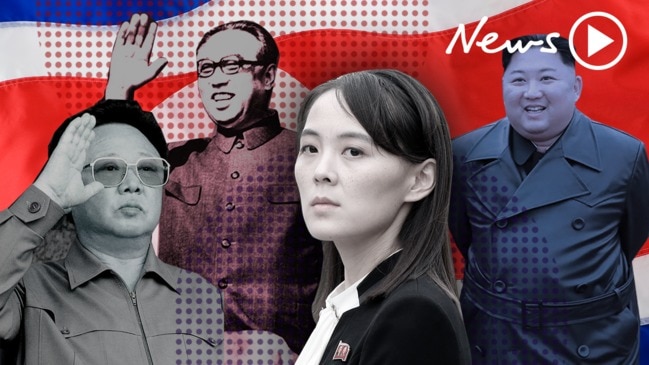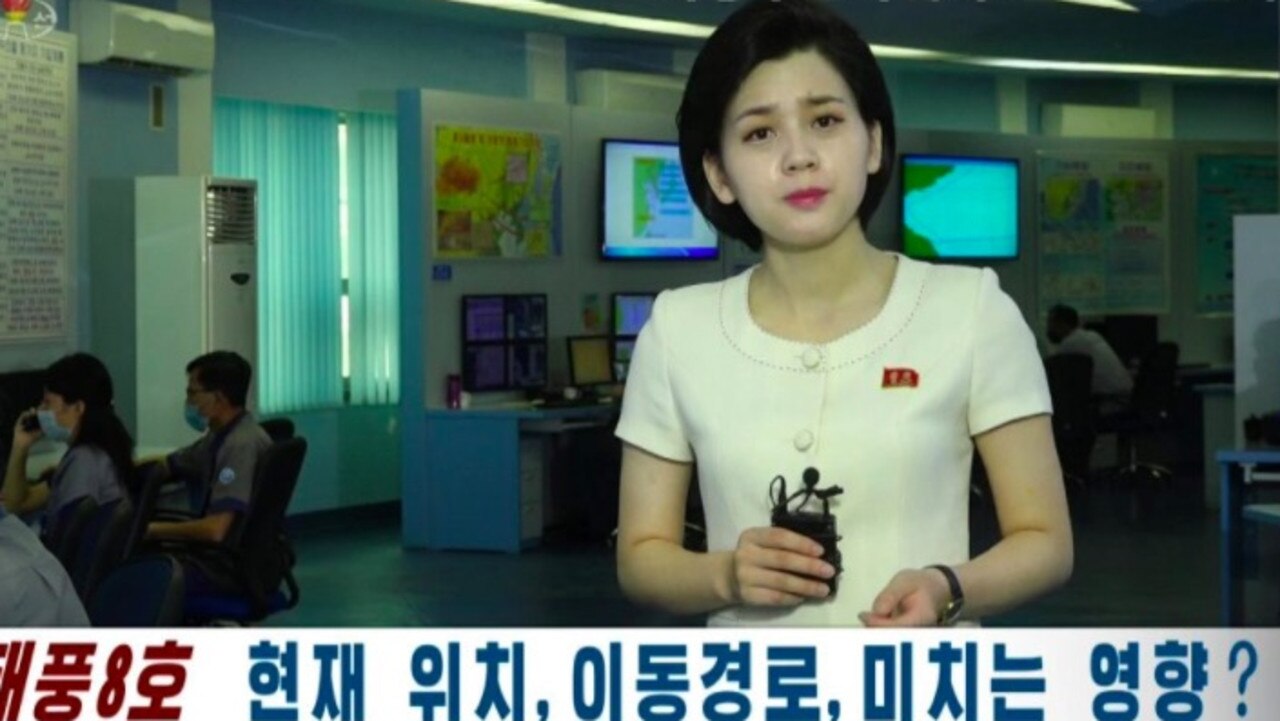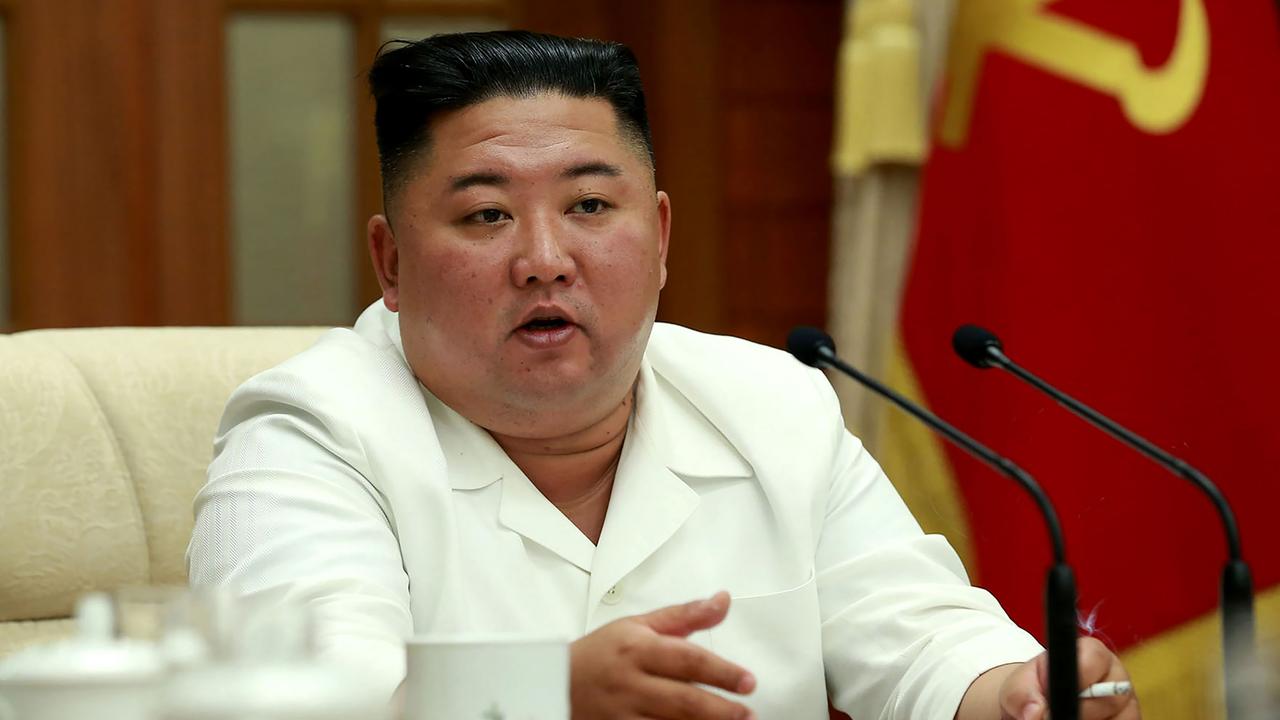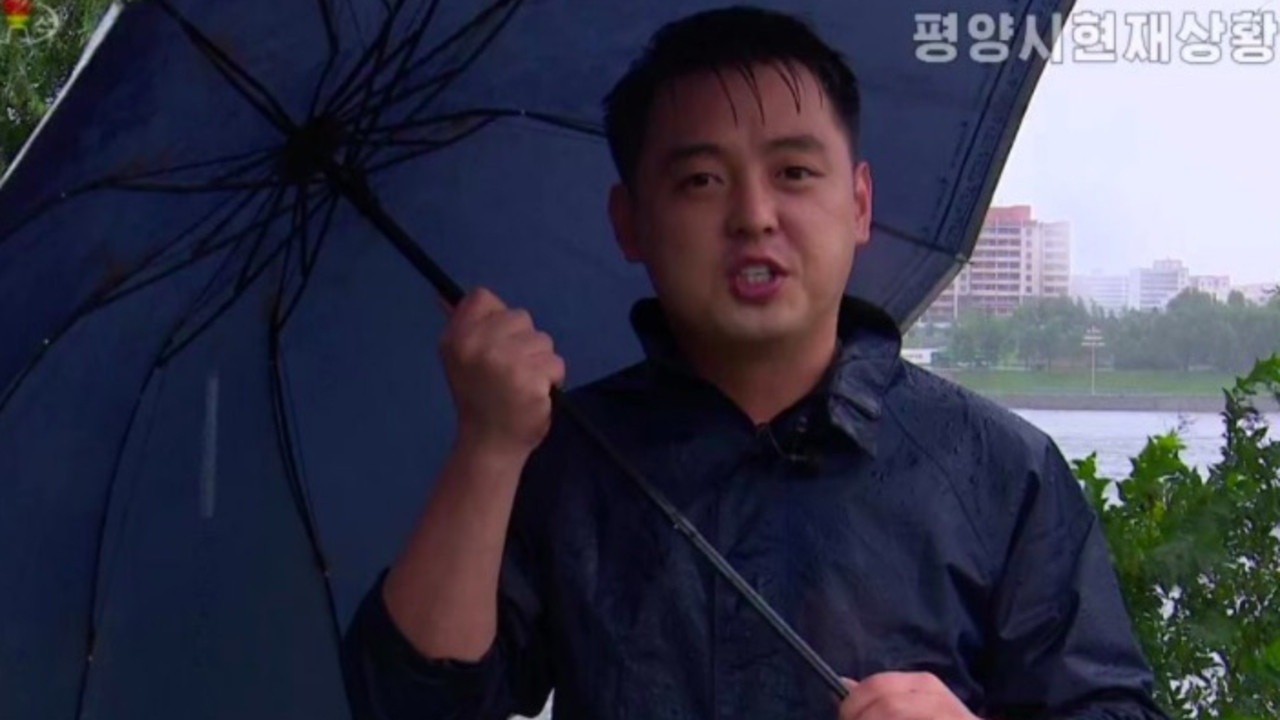Kim Jong-un’s unprecedented TV move
North Korean state television is usually very strict in how it broadcasts. But in an unprecedented move ordered by Kim Jong-un, that changed.

Kim Jong-un had North Korean television screens running urgent news about the approaching typhoon for a full 24 hours in a move that has been dubbed unprecedented by experts.
On Wednesday, North Korea’s state TV channel Korean Central Television (KCTV) did something it has never done before — broadcasting through the night as the storm Typhoon Bavi (Typhoon No. 8) approached the country.
Although the 24-hour broadcast was carried out to keep citizens informed of the approaching typhoon, it’s unclear whether Kim will continue screening news on such a regular basis.
RELATED: Why Kim’s sister is a problem
RELATED: Rumours of Kim’s death circulate again

It comes as rumours have once again circulated about the health of the Supreme Leader.
The rumours were prompted after South Korea’s spy agency said earlier this week that Kim had delegated some authority to his sister Kim Yo Jong to relieve his “governance stress”.
In response to the rumours, new photographs were also released of Kim Jong-un. But he was wearing the same bright white jacket as in similar footage released in 2019, causing some to wonder if they were old photographs.
However, Kim has since appeared in state media visiting places hit by the typhoon the day after, on Thursday, causing the rumours of his poor health to lessen in intensity.

Kim Jong-un appeared concerned about the storm, and called an executive policy council meeting of the Workers’ Party of Korea’s Central Committee on Tuesday.
A typhoon last year, called Lingling, ripped through the country and destroyed hundreds of homes.
According to the North Korean Central News agency, Kim called on the party to “thoroughly prevent the casualties and minimise the damage to the crops”.

KCTV began broadcasting on August 26 at 9am but changed its strict schedule to flag the impending typhoon to citizens.
According to North Korea analysis site 38North, every news report in North Korea starts with the national anthem, followed by the Song of Kim Il Sung and the Song of Kim Jong Il. Then it launches into news items. News about Kim Jong-un always comes first, followed by other news items deemed less important.
However, on Wednesday, media outlets prioritised the typhoon reportage above that of the Supreme Leader.
It was “a rare case of something taking precedence over news about Kim Jong Un,” according to 38North.


Just 20 minutes after the initial news report on the typhoon, a second one was broadcast.
These two programs were replayed throughout the day. They were also interspersed with a longer, five-minute broadcast on the same topic.
By noon that day, North Korea’s TV station had broadcast eight warnings.
Every 20 to 30 minutes for the rest of the day the station continued to broadcast these news items, which resembled “breaking news” reports.
It continued well into the night, until dawn the next day.
The broadcasts were often clumsily done, often cutting into movies mid-sentence to deliver crucial information.
After 5am, the reports changed. Instead of being warnings of the typhoon, they were now able to get reporters onto the ground to film the damage wrought from the unusual weather event.
But 38North reported: “After the danger had passed, state media snapped back to its business-as-usual diet of propaganda-heavy programming.”





